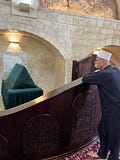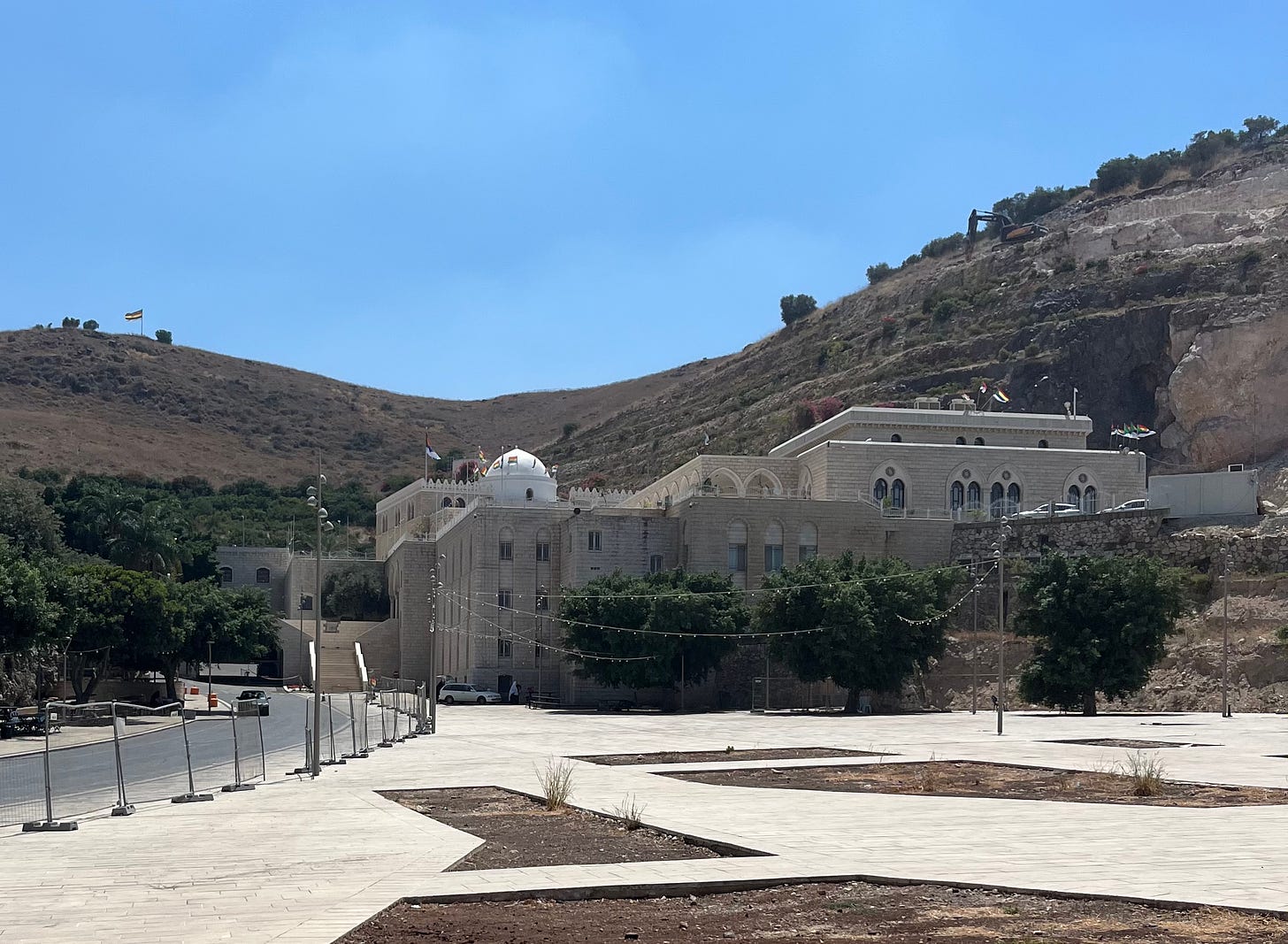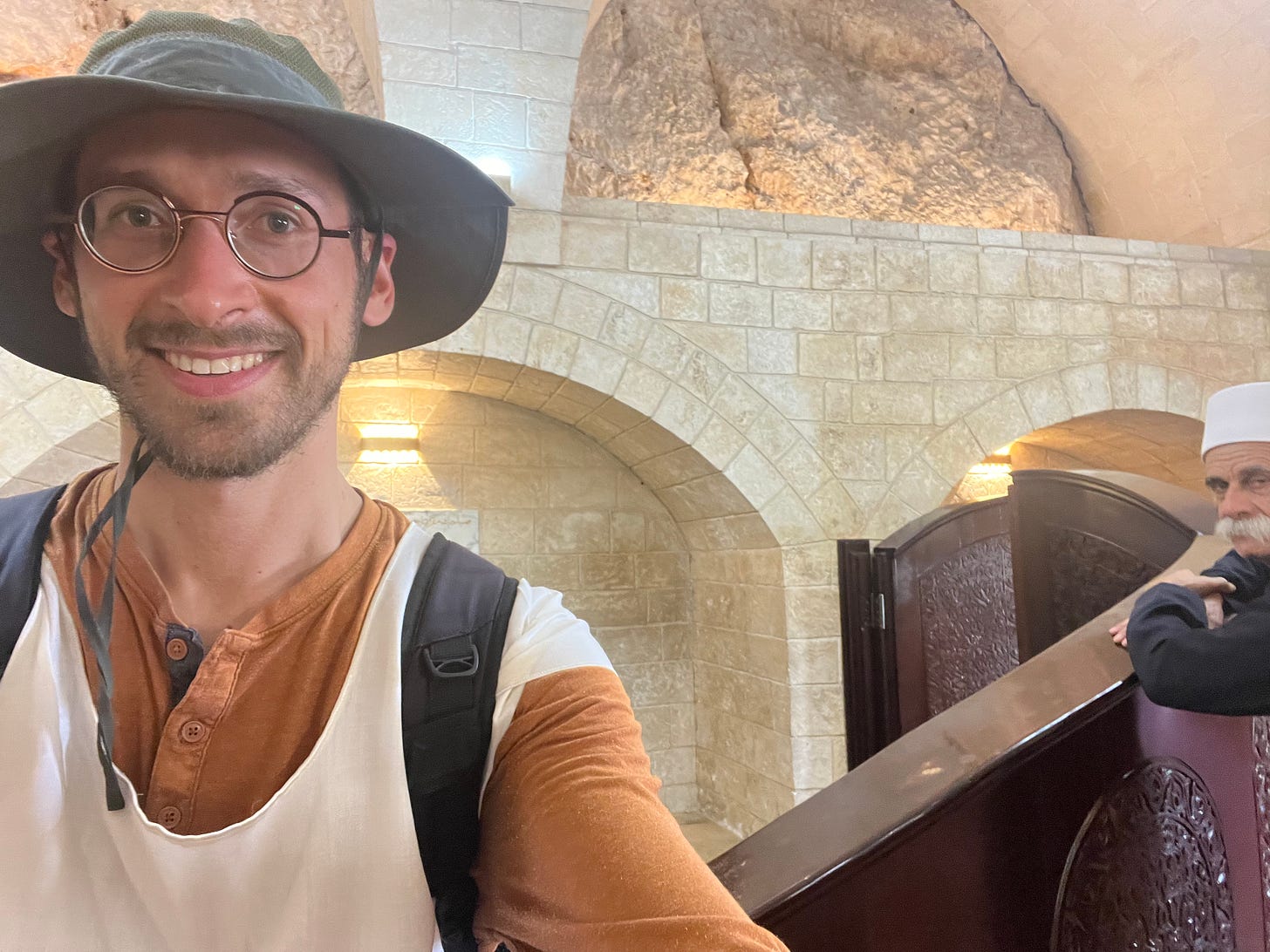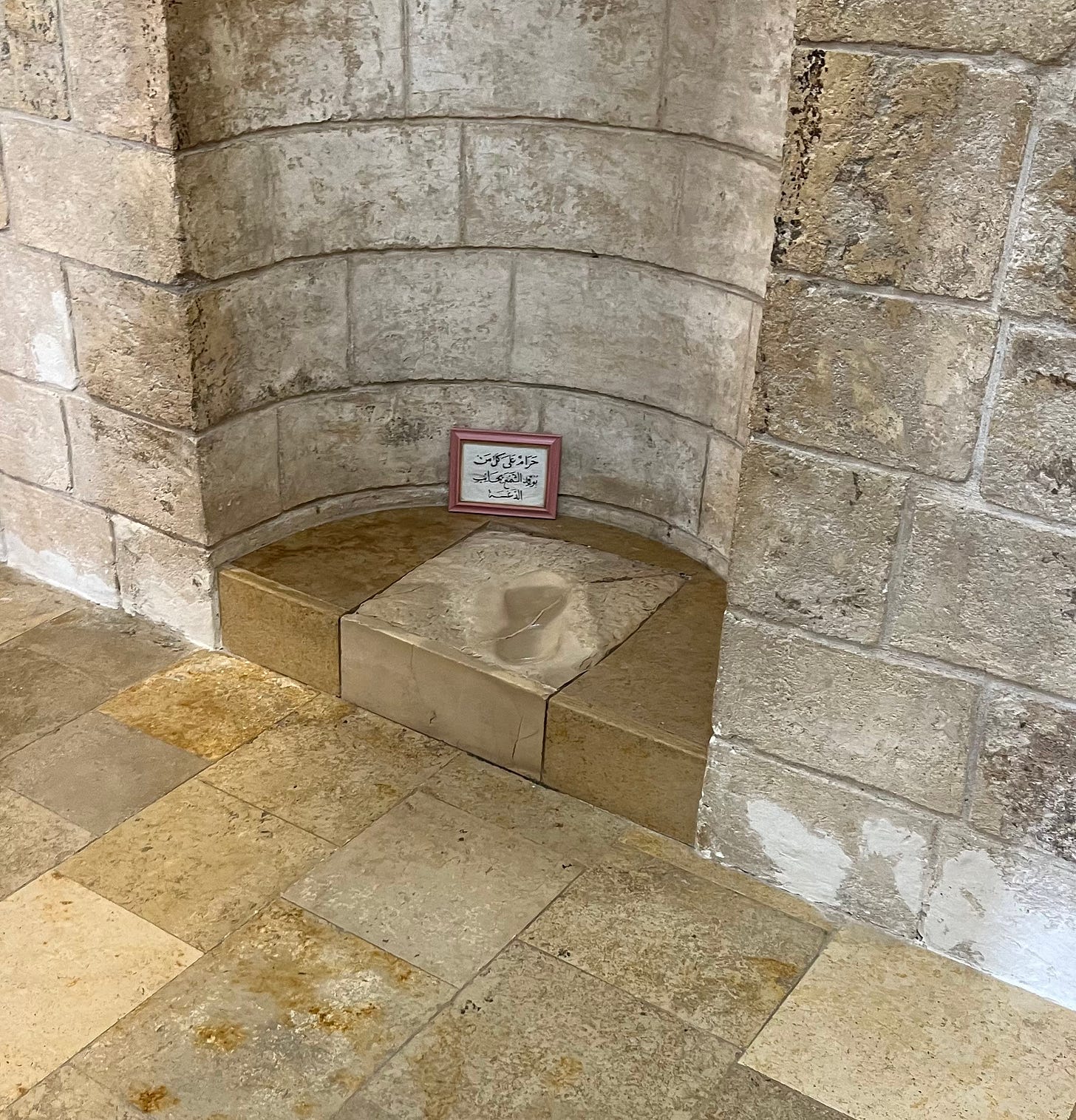My Druze Minder Said To Take off My Shoes and Step Over the Beam Without Touching it
Visiting the shrine that both Jews and Druze believe is Yisro's (Jethro) tomb.
The Druze community of northern Israel has been in the news recently after the horrible attack last month on a soccer court in Majdal Shams that left a dozen kids dead.
The Jews of Israel have an interesting relationship with their Druze neighbors: although the Druze speak Arabic, and (at least on the surface) have little in common with Jewish history, faith, and culture, we’ve mostly managed to get along well together - far better than with other local Arab communities. Many Druze even serve in the Israel Defense Forces.
On a recent hike in the southern Galilee, I experienced up close this peaceful coexistence.
This is Nabi Shuaib, the holiest place in the world according to the Druze faith, located right behind Mount Arbel’s stunning overlook of the Kinneret.
According to both Druze and Jewish traditions that go back at least to 13th century, the shrine inside this building (under the white dome) is the tomb of Yisro (Jethro), the father-in-law of Moshe (Moses), a biblical figure who’s also a central figure in the Druze tradition.
So when I was in the area several several weeks ago, making my rounds praying for peace and healing in Israel at the graves of many of Jewish history’s holiest teachers, I made sure to stop by Nabi Shuaib.
As I walked up the stairs to this possibly 3,000+ year old shrine, I was greeted by a dozen Druze kids (no security guards anywhere) who pointed me upward toward the tomb at the top of the complex. When I got to the roof, they told me - in fluent Hebrew - to talk to a certain elderly man sitting in an office.
I wished the man good afternoon, and asked if I can pray at the grave. After looking me over, he motioned to a bench and told me to sit and take off my shoes. Walking on the stone floor in my socks, I felt a bit closer to Yisro’s legacy: his son-in-law was told by God to remove his shoes when he visited the burning bush outside of Egypt.
When we reached the tomb-room, my minder pointed to a long stone (or was it wood?) beam at the foot of the door (imagine a doorframe with four sides). He told me to hop over the beam without touching it, with his gaze suggesting that disobeying would quickly turn me into an enemy of the Druze. I was happy to follow instructions: I like when other people respect my religion, so why shouldn’t I respect theirs?
Inside the dimly lit shrine, I saw a young boy praying (or maybe meditating?), and a few elderly women talking in the adjacent room. My minder kept a respectful distance, but never stopped watching me as I prayed for peace and healing for all of Israel’s citizens - Jews and Druze together.
I asked him if I could take pictures. He gave a curt nod, so I quickly snapped away, even taking this selfie-of-sorts together with him.
.As I got ready to leave, he nodded toward a footprint embedded in a stone in the corner.
Wow, I thought! There it is, for real!
I had read centuries-old testimonies from Jewish visitors to this shrine who had been told by their Druze minders (they’ve been here awhile) that this imprint was made by Yisro himself. (Hey, why not?)
On my way out, I again gingerly hopping over the stone beam. After putting my shoes back on, I hopped down to the Arbel cliffs to pick up my bus home from Teveria.
On the trail, I passed by more ancient sites with rich Jewish traditions, including one that might be the second oldest gravesite in the world.
More on that in a few weeks, because for the next two weeks I’ve got some super-important updates to share with you.
But I’ll already fill you in now that the expanded and revised edition of my book is now released for sale by Menucha Publishers, and is making its way to Jewish bookstores all over the world. You can order it today on Amazon here.








What an adventure! So great for those of us who are unable to be there!
Fascinating. So many people have never heard of this. May e the Druize are Yitro's descendants?